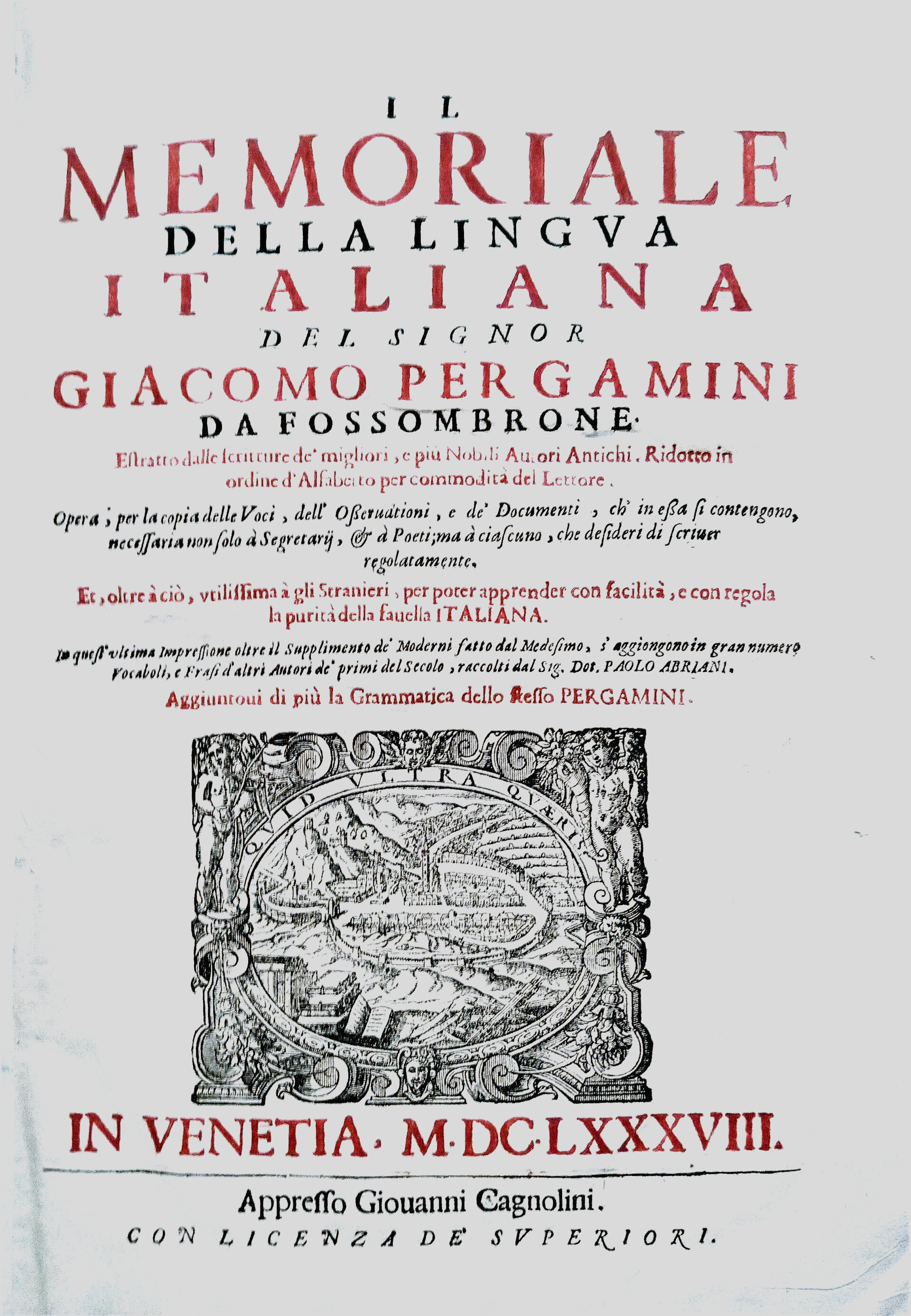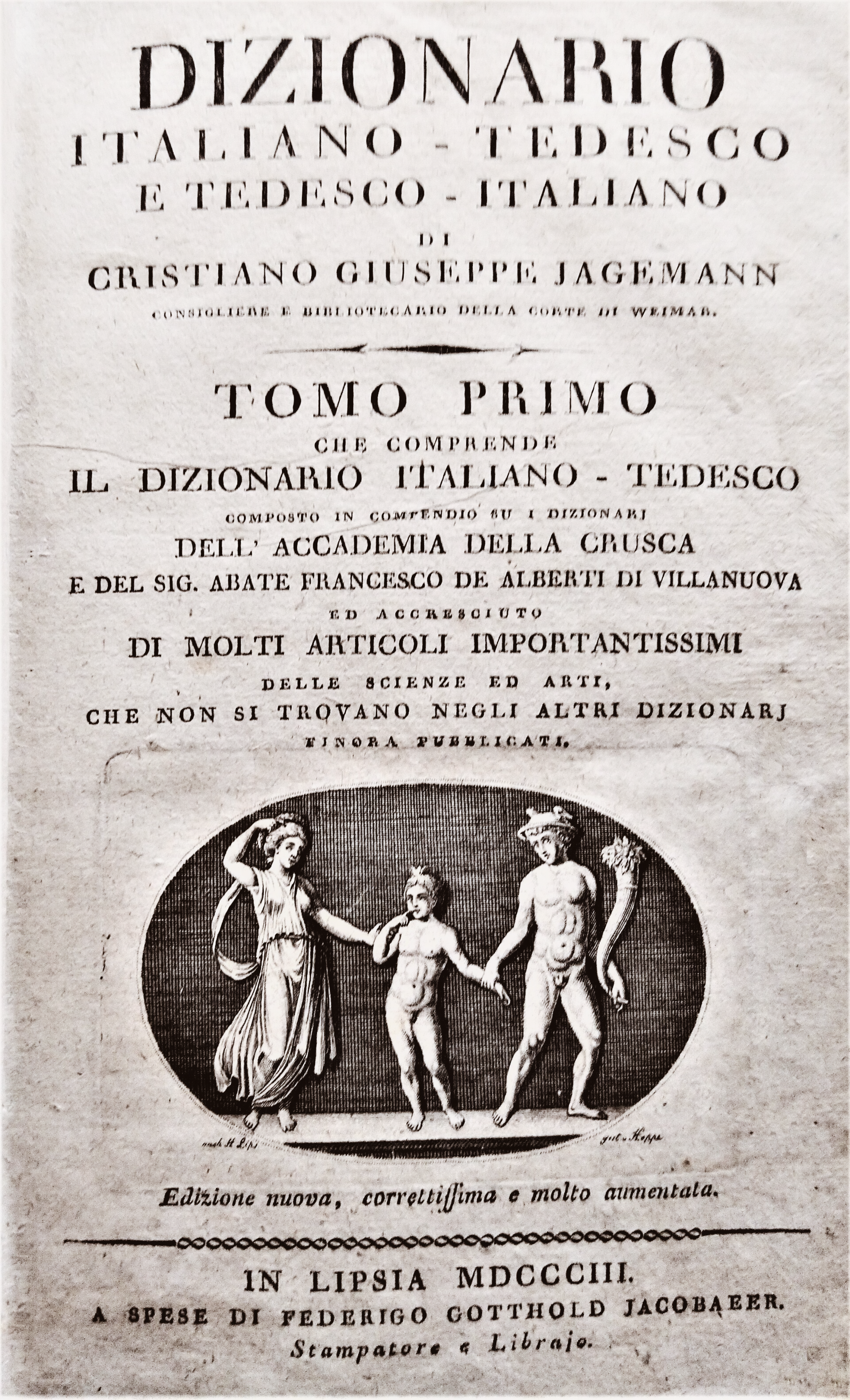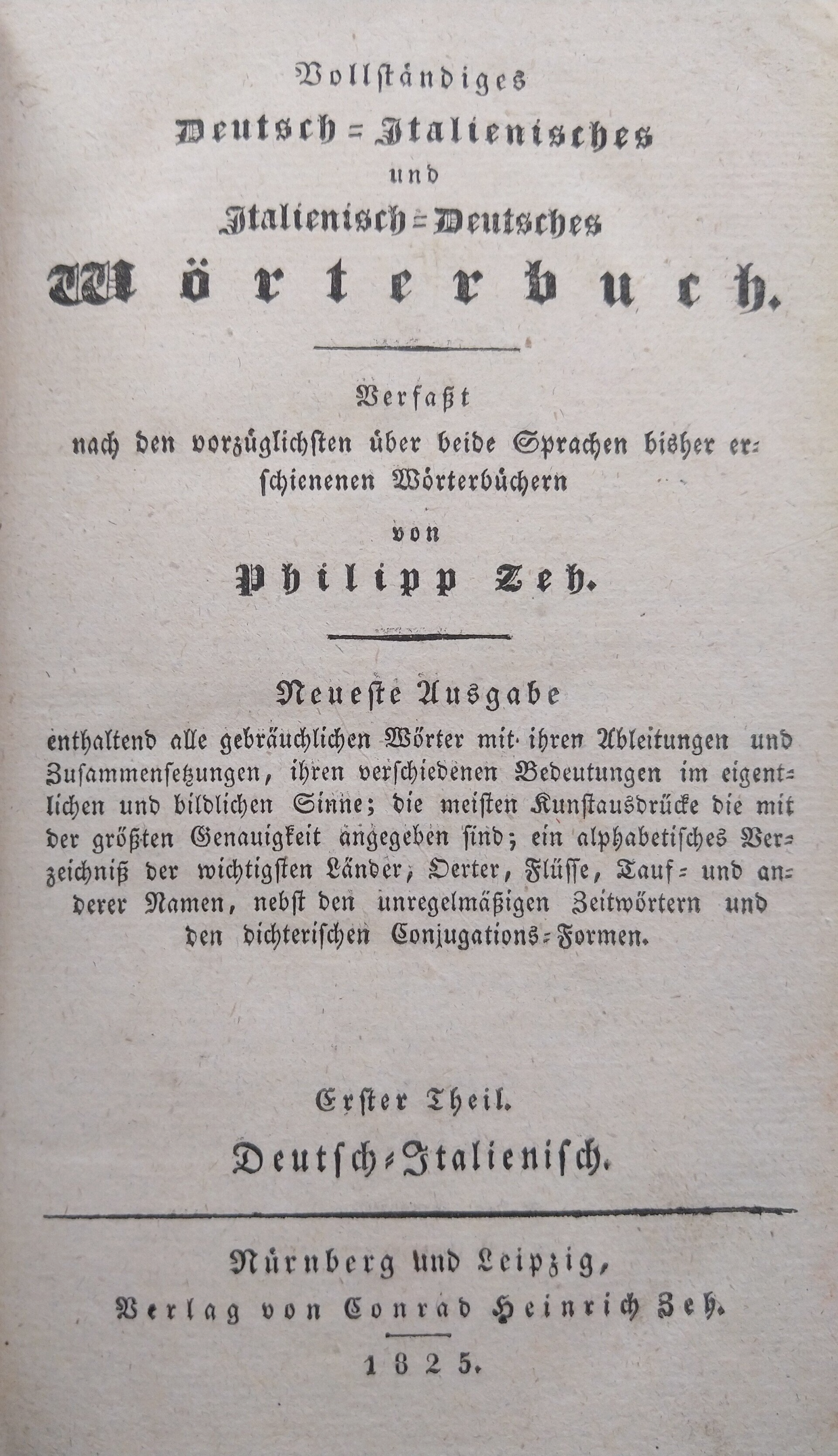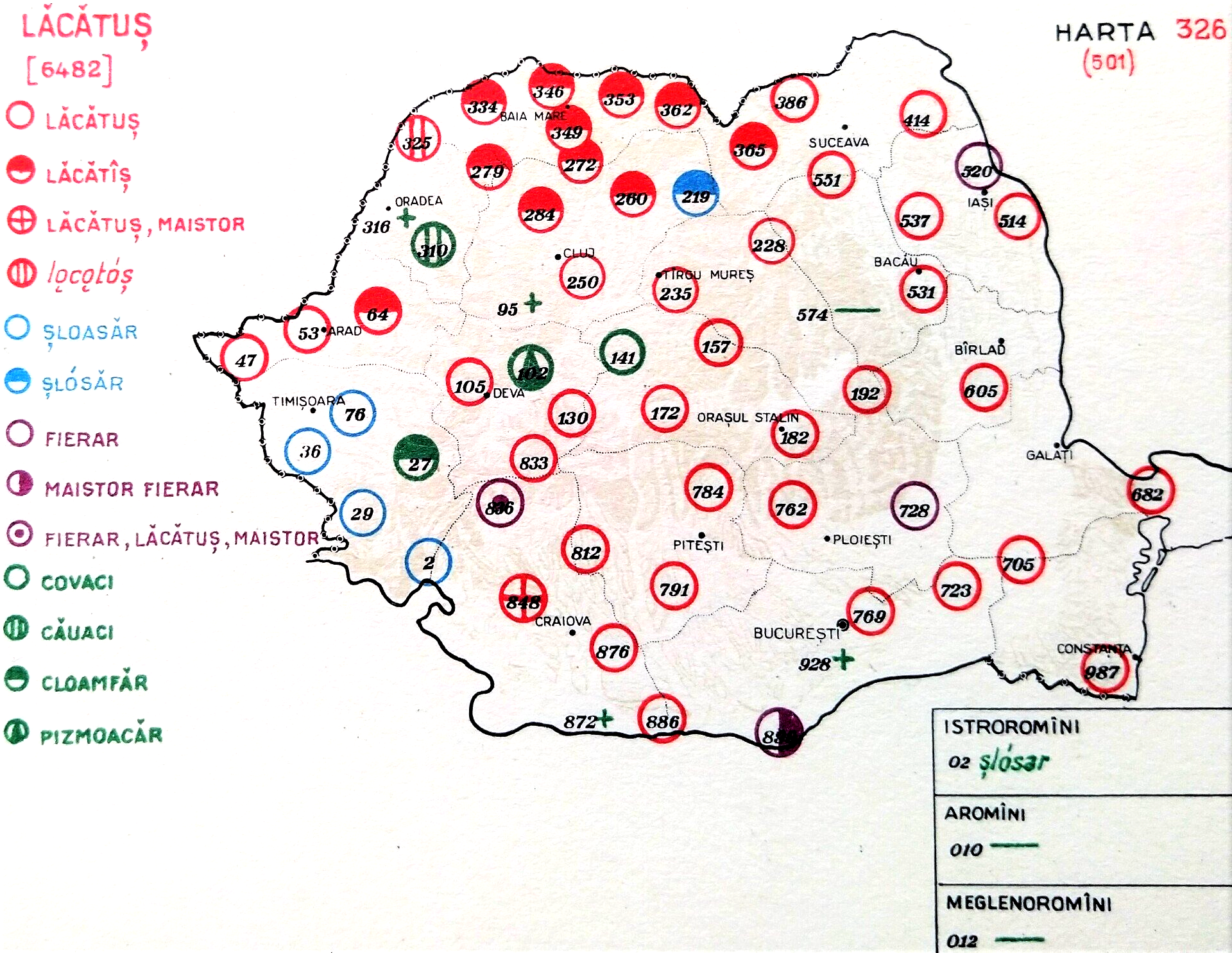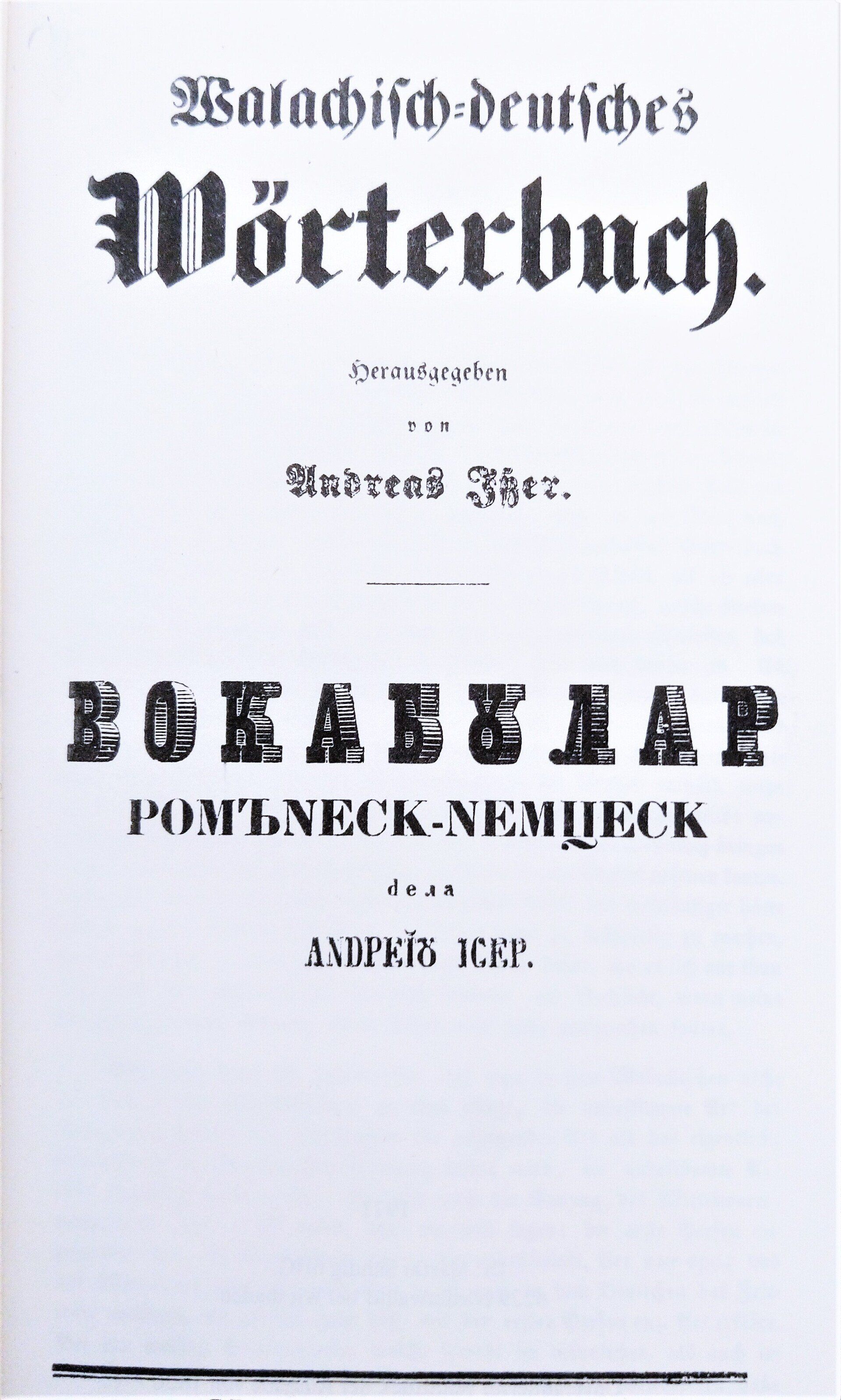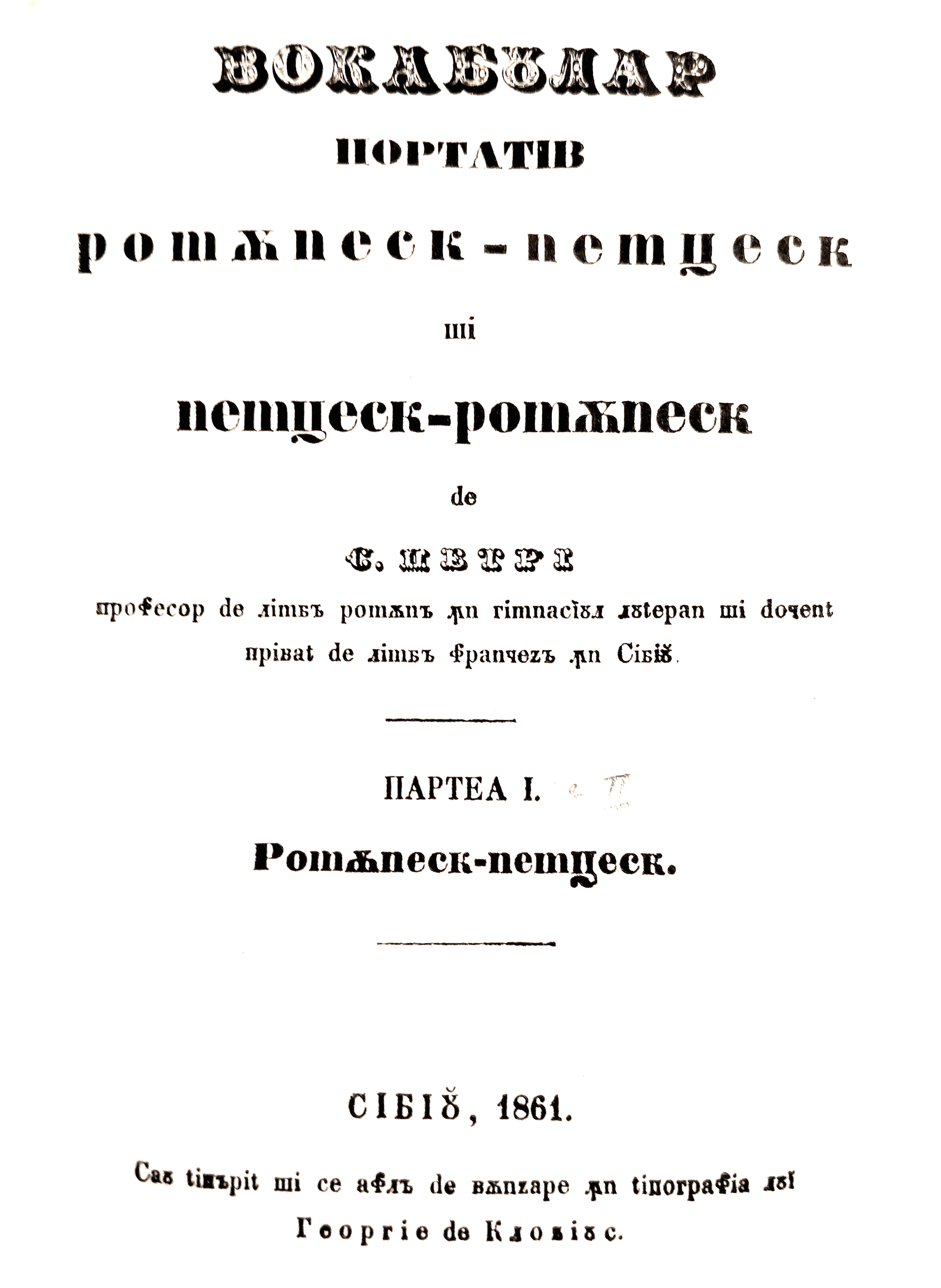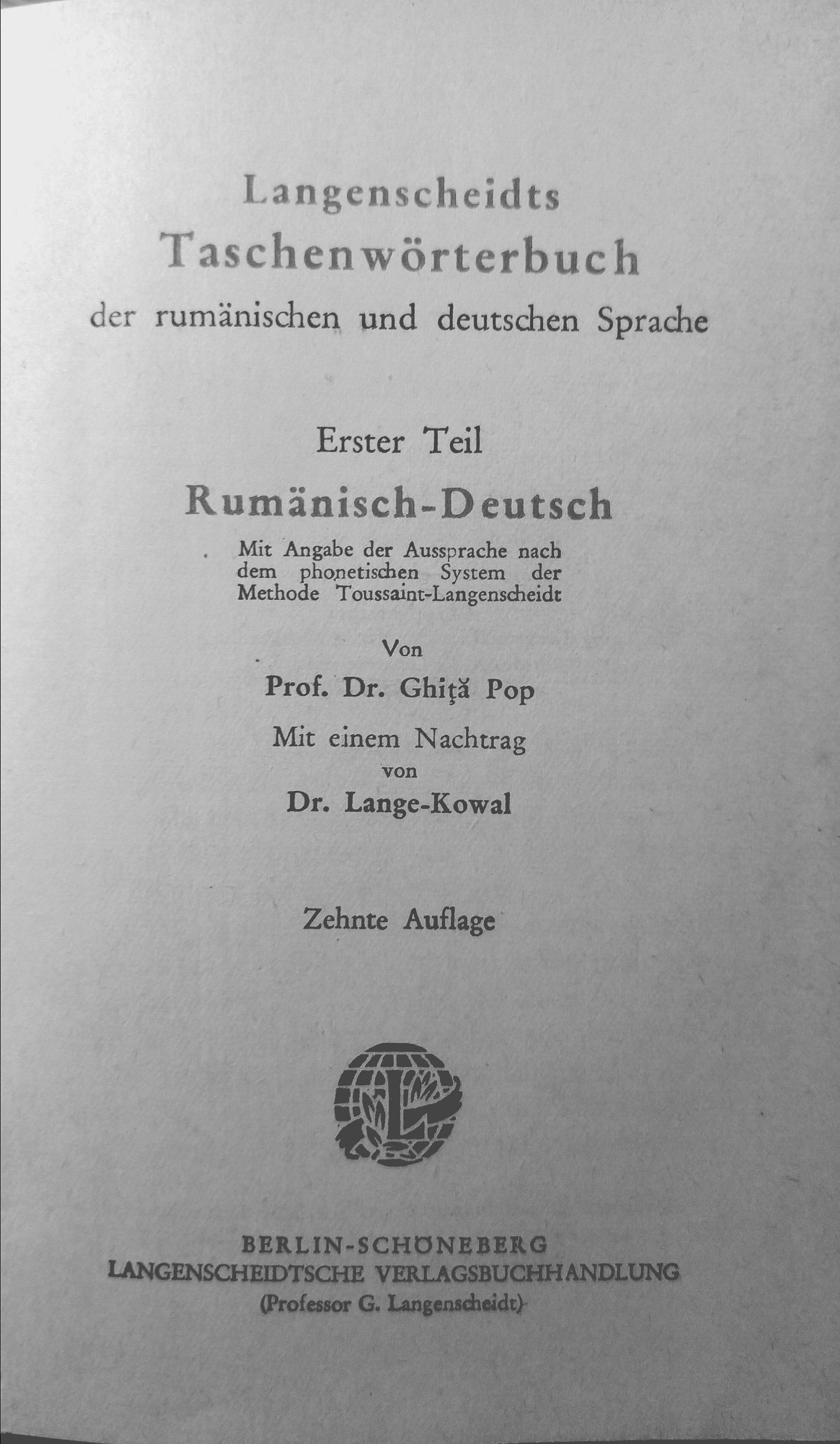Romance Philology
Romanistik | Filologia romanza | Romanska filologija | Filologie romanică
What you will find
on this page
auf dieser Seite | su questa pagina |
na tej strani | pe această pagină
Italian
Italienisch | Italiano
|
Italijanščina |
Italiană
As Portuguese, Spanish, French and Romanian, Italian is a Romance language which evolved from Vulgar Latin. For Thomas Mann there was »no doubt that angels in the Sky speak Italian. Impossible to imagine«, he wrote, »that these blessed creatures use a less musical language.«
On Earth, instead, Italian is the official language of Italy, Switzerland (cantons of Ticino and Grisons), San Marino, and the Vatican City State. It is also spoken in the Principality of Monaco (along with ›Monegasco‹, a Ligurian dialect, and French). Italian is granted an official minority status in Istria (Slovenia and Croatia), while ›Talian‹, a dialect of the Venetian idiom, is a co-official language in some municipalities of the Brasilian states of Rio Grande do Sul and Santa Catarina. Corsican is very similar to Italian; traditionally considered as an Italian dialect, it is now categorized as a language.
Italian has approximately 85 million native speakers worldwide, out of which 65 million in Europe. It is the continent's fourth most spoken language, after Russian, German, and French. Italian is spoken by 1.5 million people in Argentina, 900,000 in Australia, 710,000 in the USA, 500,000 in Brazil (›Talian‹, and São Paulo area), 320,000 in Canada, and 200,000 in Venezuela. Until the 1970s, a Pidgin Italian was spoken in some areas of the former Italian colonies of Somalia and Eritrea, where standard Italian is still widely understood and spoken. While it is only 22nd on the world's list of most spoken languages (it ranked 13th in 1900), Italian is fourth on the list of the most commonly learned foreign languages in the world.
Among the major Romance languages, Italian is closest to Latin, with a difference of just 12%. Only Sardinian shows a lower rate of divergence (8%), while it is much higher in the case of Spanish (20%), Romanian (23.5%), Portuguese (31%), and French (44%).
Milestones in Italian and German-Italian / Italian-German Lexicography
Seminars on Italian
Language
Sprachseminare Italienisch | Seminari di lingua italiana | Jezikovni tečaji italijanščine | Seminari de limba italiană
Fall/Winter 2025/26
Italian for Beginners 2 (intensive course)
Italienisch - Grundstufe 2 (A1)
December 15 through December 19, 2025
9.00 a.m. - 2.00 p.m.
Bremen – VHS – 69, Faulenstrasse - Room 208
Italian for Beginners 3 (intensive course)
Italienisch - Grundstufe 3 (A1)
January 5 through January 9, 2026
9.00 a.m. - 2.00 p.m.
Bremen – VHS – 69, Faulenstrasse - Room 208
Italian for Beginners 4 (intensive course)
Italienisch - Grundstufe 4 (A1)
January 12 through January 16, 2026
9.00 a.m. - 2.00 p.m.
Bremen – VHS – 69, Faulenstrasse - Room 307
Spring/Summer 2026
Italian for Beginners 1 (intensive course)
Italienisch - Grundstufe 1 (A1)
April 13 through April 17, 2026
9.00 a.m. - 2.00 p.m.
Bremen – VHS – 69, Faulenstrasse - Room 307
Italian for Beginners 2 (intensive course)
Italienisch - Grundstufe 2 (A1)
April 20 through April 24, 2026
9.00 a.m. - 2.00 p.m.
Bremen – VHS – 69, Faulenstrasse - Room 307
Italian for Beginners 3 (intensive course)
Italienisch - Grundstufe 3 (A1)
May 4 through May 8, 2026
9.00 a.m. - 2.00 p.m.
Bremen – VHS – 69, Faulenstrasse - Room 105
Italian for Beginners 4 (intensive course)
Italienisch - Grundstufe 4 (A1)
May 18 through May 22, 2026
9.00 a.m. - 2.00 p.m.
Bremen – VHS – 69, Faulenstrasse - Room 104
seminar handouts:
download
Seminars on Italian
Literature
Literaturseminare Italienisch | Seminari di letteratura italiana | Tečaji italijanske književnosti | Seminari de literatura italiană
Fall/Winter 2025/26
Mattinate di lettura (Italienische Lesematinées)
»Dal paradiso al declino ambientale: l’uomo di fronte alla natura«
September 27, 2025, through January 17, 2026
dates: September 27, October 11, November 15, November 29, December 13, 2025; January 17, 2026
10.00 a.m. - 1.15 p.m.
Bremen – VHS – 69, Faulenstrasse - Room 304
Spring/Summer 2026
Mattinate di lettura (Italienische Lesematinées)
»Potere e bellezza: esplorazioni nella letteratura e nelle arti visive italiane«
February 21 through June 13, 2026
dates: February 21, March 14, March 21, April 11, May 9, June 13, 2026
10.00 a.m. - 1.15 p.m.
Bremen – VHS – 69, Faulenstrasse - Room 304
Literaturseminare Italienisch: Rückschau 1998-2025 | Past Seminars on Italian Literature, 1998-2025
Romanian
Rumänisch | Romeno | Romunščina | Română
Closely related to Italian, French, Spanish and Portuguese, Romanian is the easternmost Romance language. It has approximately 30 million native speakers worldwide, out of which 24 million in Europe. It is the continent's ninth most spoken language and the official language of Romania and the Republic of Moldova. In addition, Romanian-speaking communities are to be found in Hungary, Serbia, Bulgaria, Ukraine, and Russia. Italy, Germany, Spain, and the United Kingdom have major Romanian immigrant communities, adding up to three million speakers.
Languages similar to Romanian (Istro-Romanian, Aromanian, and Megleno-Romanian, by some scholars considered as Romanian dialects) are spoken in Croatia, Serbia, Albania, North Macedonia, Bulgaria, Greece, and Turkey.
The first written Romanian text dates back only from 1521: a letter sent by the Wallachian merchant Lupu Neacșu to the mayor of Brașov. For centuries, Romanian had no written circulation, since Slavonic was widely used as a liturgical, official, and literary language, while Romanian was the language of the paesantry. Roughly speaking, Romanian was written in the Romanian Cyrillic alphabet until 1862, when it was replaced by the Latin alphabet.
»A language as sweet as a honeycomb«, as the country's most famous poet, Mihai Eminescu, once said, Romanian
is often ranked as the hardest Romance language to learn. Nevertheless, learners will gain fluency fast.

Rodna Mountains - Munții Rodnei,
Eastern Carpathians, Romania
(photo © Michael Wedekind)
What makes Romanian special?
- Romanian partly preserves the Latin case declension of nouns (nominative/accusative, genitive/dative, vocative), while other Romance languages reduced it drastically, replacing it by prepositions preceding the noun (genitive: de + ablative; dative: a + accusative)
- the definitive article is attached to the end of the noun as in other languages of the Balkan Language Area (Balkansprachbund) or, e.g., in Danish
- Romanian has three grammatical genders: masculine, feminine, and neuter, the latter being masculine in the singular and feminin in the plural
- Romanian widely uses a subjunctive in place of an infinitive: vreau să merg - I want to go (literally, I want that I go)
- around 14% of the Romanian vocabulary stemms from Slavic (cf., approx. 8% of the Spanish vocabulary is of Arabic origin). The
etymology of Romanian place names
deserves particular mention.
German-Romanian / Romanian-German Lexicography
(19th and Early 20th Centuries)
Dictionaries of the Romanian Academy
Seminars on Romanian Language
Sprachseminare Rumänisch | Seminari di lingua romena | Jezikovni tečaji romunščine | Cursuri de limba română
Fall/Winter 2025/26
Romanian for Beginners 1 (intensive course)
Rumänisch - Grundstufe 1 (A1)
January 19 through January 23, 2026
9.00 a.m. - 2.00 p.m.
Bremen – VHS – 69, Faulenstrasse - Room 307
Romanian for Beginners 3
Rumänisch - Grundstufe 3 (A1)
September 26, 2025, through January 30, 2026
dates: September 26, October 10, November 14, November 28, December 8 (Monday, 6.30-8.45 p.m., room 111), December 11 (Thursday, 6.30-8.45 p.m., room 210), 2025; January 6 (Tuesday, 6.30-8.45 p.m., room 302), January 9, January 16, January 30, 2026
4.15 p.m. - 6.45 p.m.
Bremen – VHS – 69, Faulenstrasse - Room 214
Spring/Summer 2026
Romanian for Beginners 1 (intensive course)
Rumänisch - Grundstufe 1 (A1)
June 8 through June 12, 2026
9.00 a.m. - 2.00 p.m.
Bremen – VHS – 69, Faulenstrasse - Room 307
Romanian for Beginners 1
Rumänisch - Grundstufe 1 (A1)
February 13 through June 12, 2026
dates: February 13, February 20, February 27, March 13, March 20, April 10, April 24, May 8, May 22, June 12, 2026
7.00 p.m. - 9.15 p.m.
Bremen – VHS – 69, Faulenstrasse - Room 307
Romanian for Beginners 4
Rumänisch - Grundstufe 3 (A1)
February 13 through June 12, 2026
dates: February 13, February 20, February 27, March 13, March 20, April 10, April 24, May 8, May 22, June 12, 2026
4.15 p.m. - 6.45 p.m.
Bremen – VHS – 69, Faulenstrasse - Room 307

